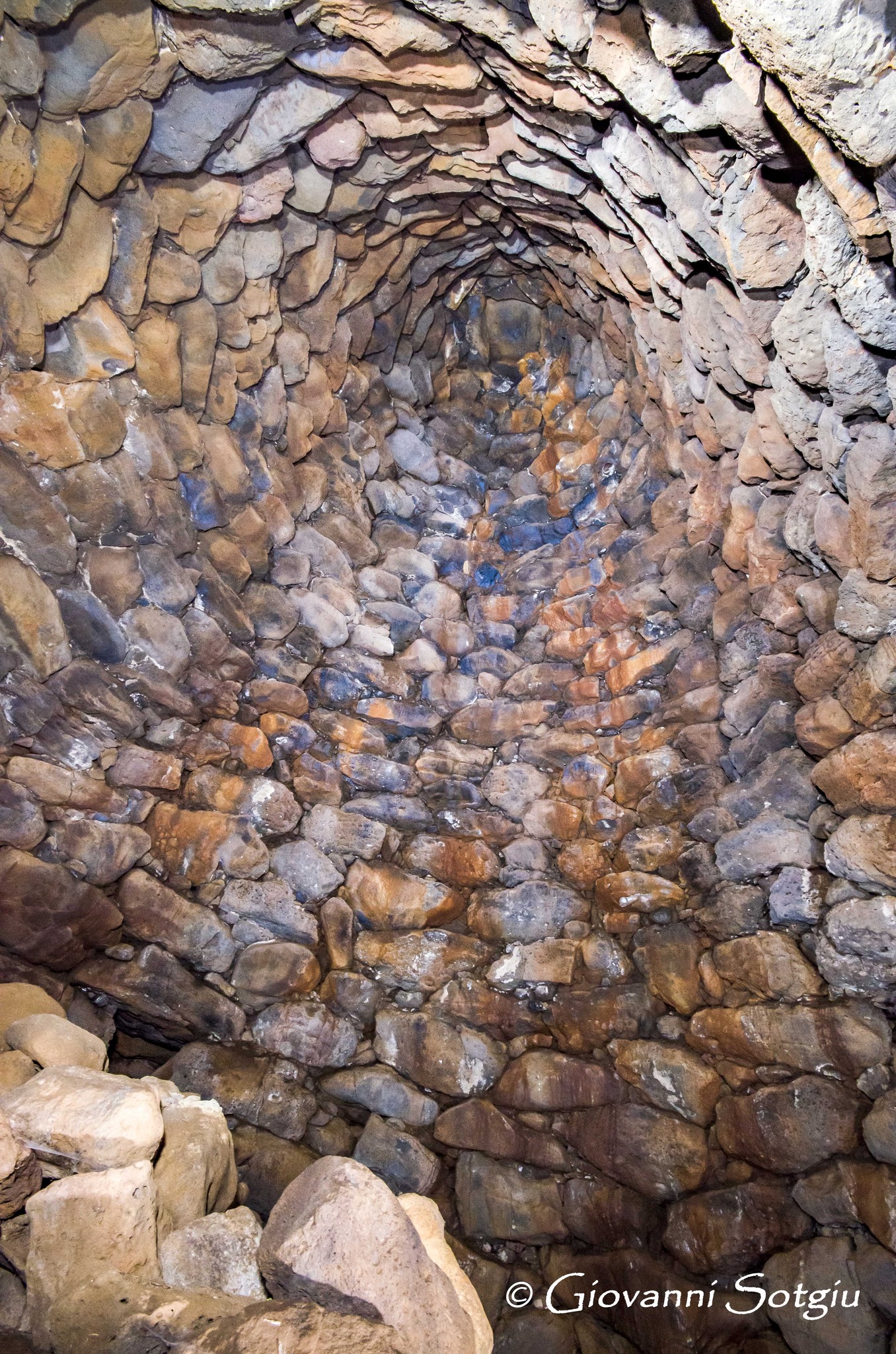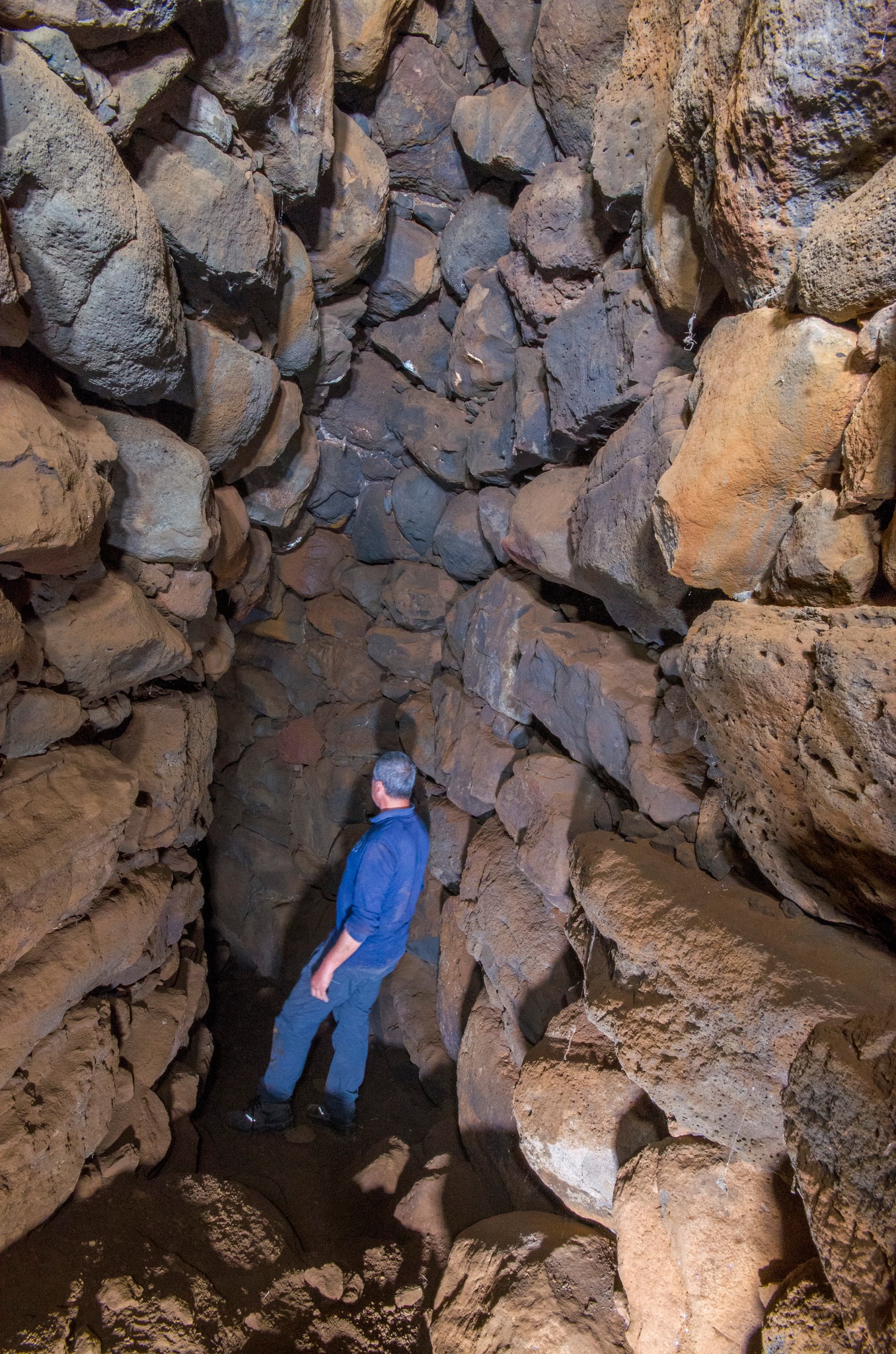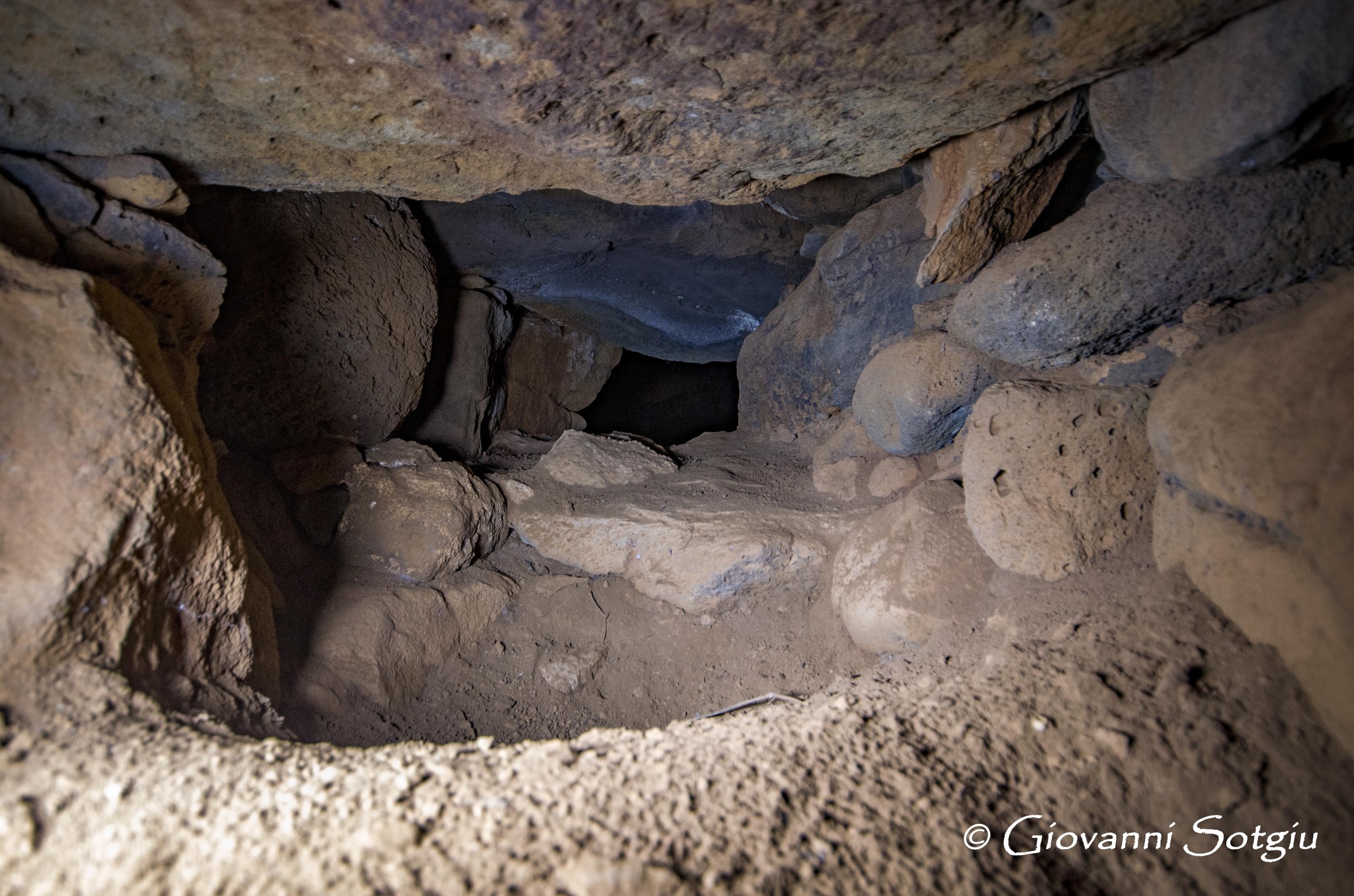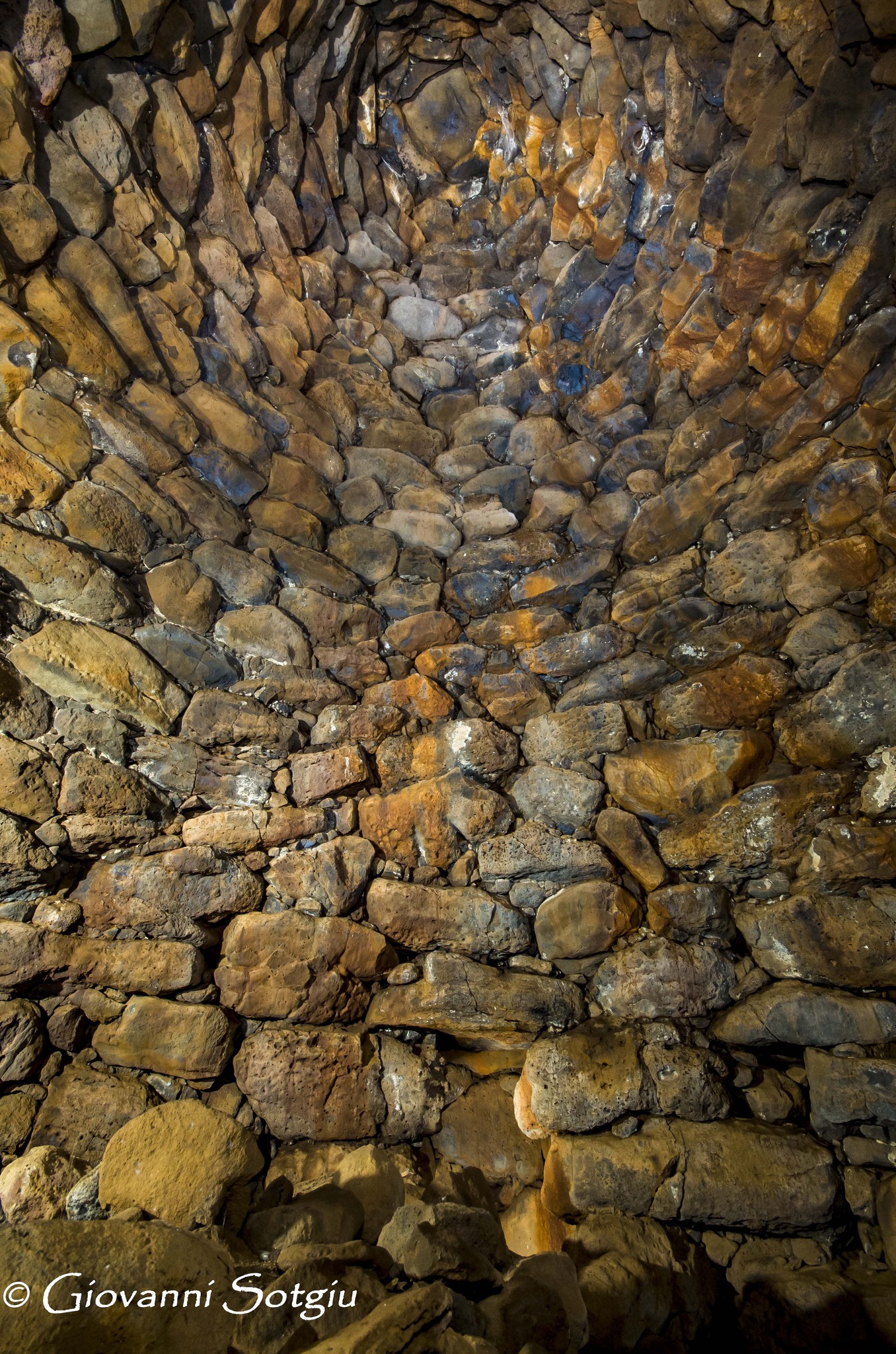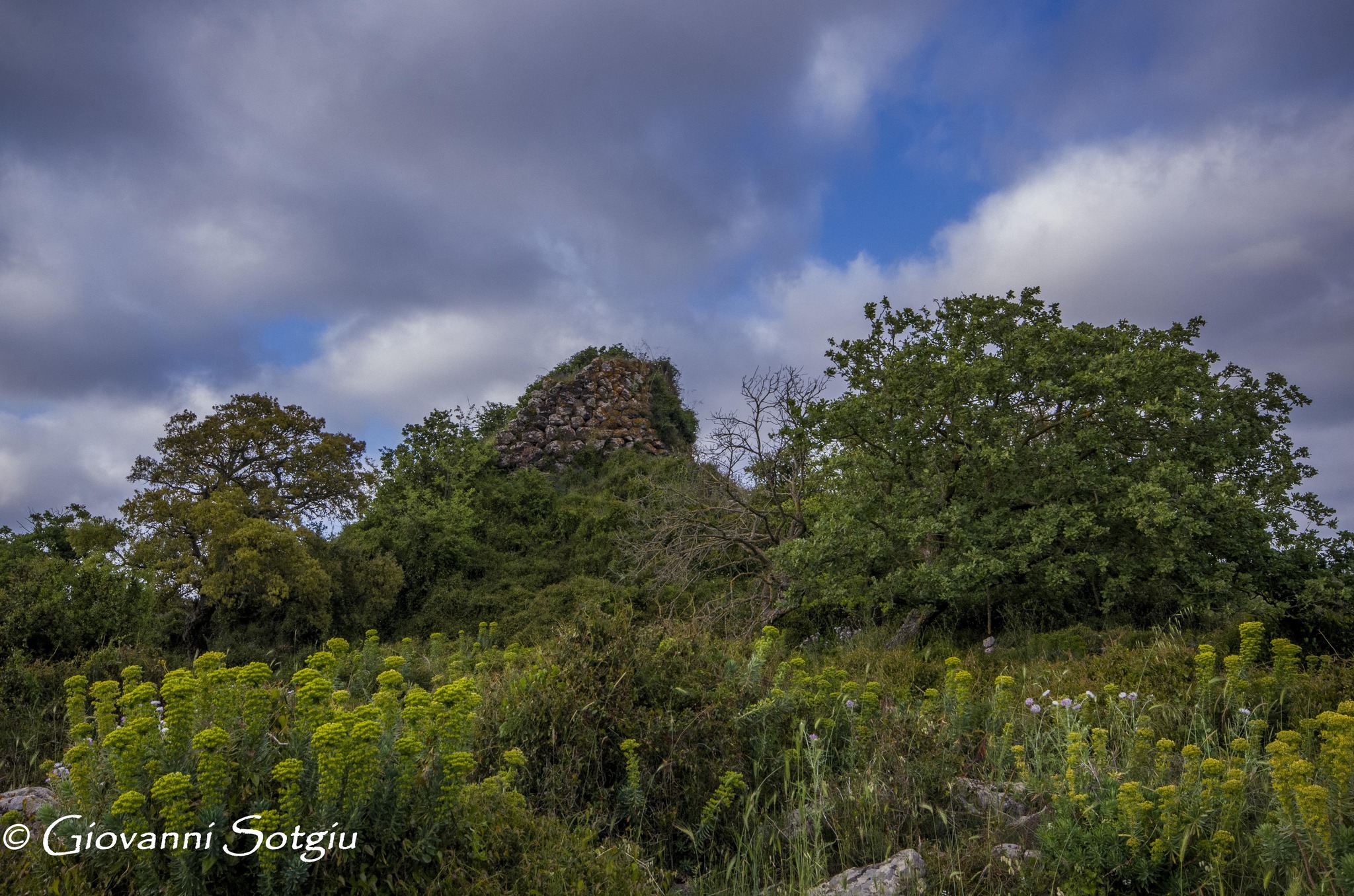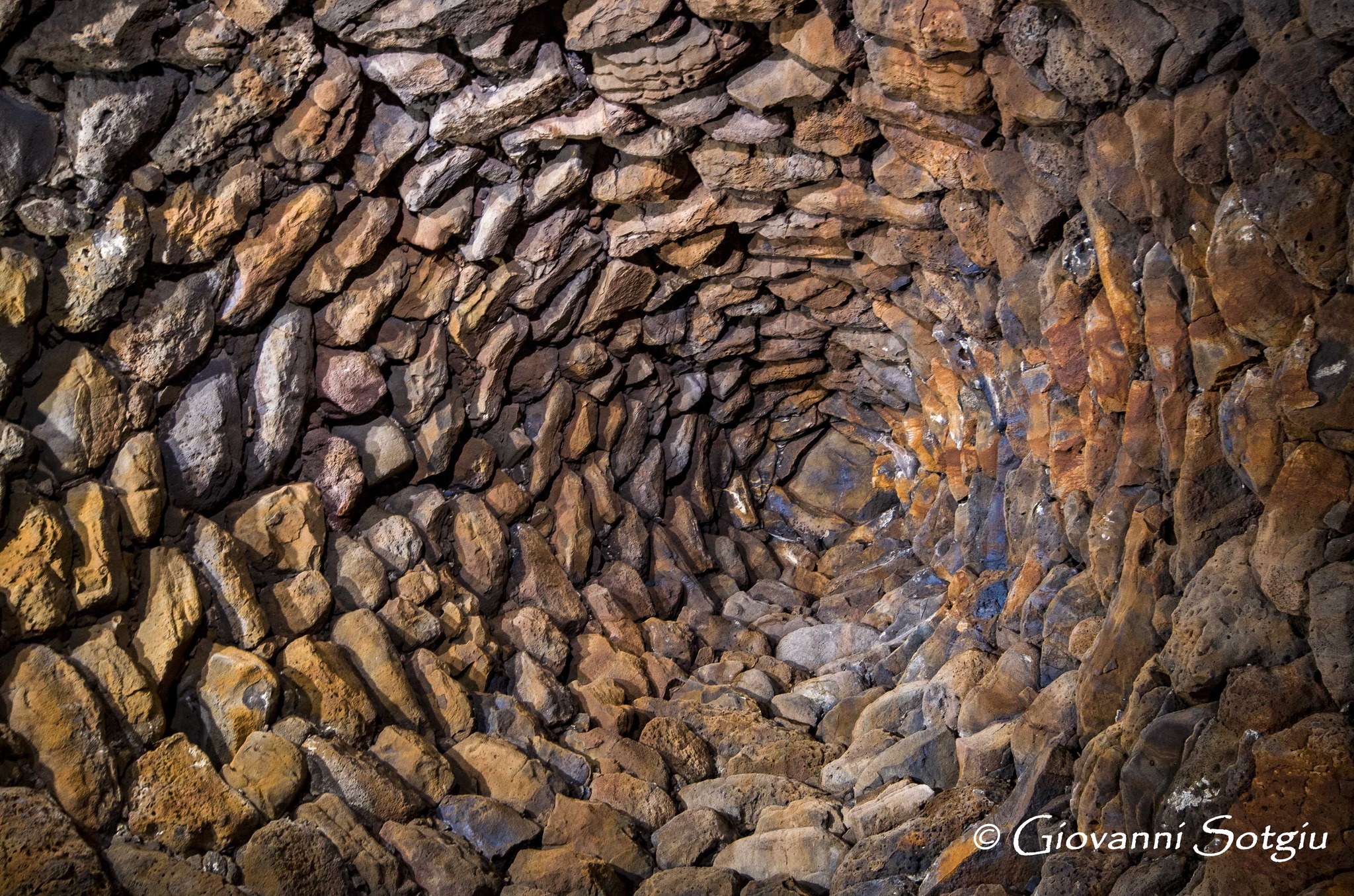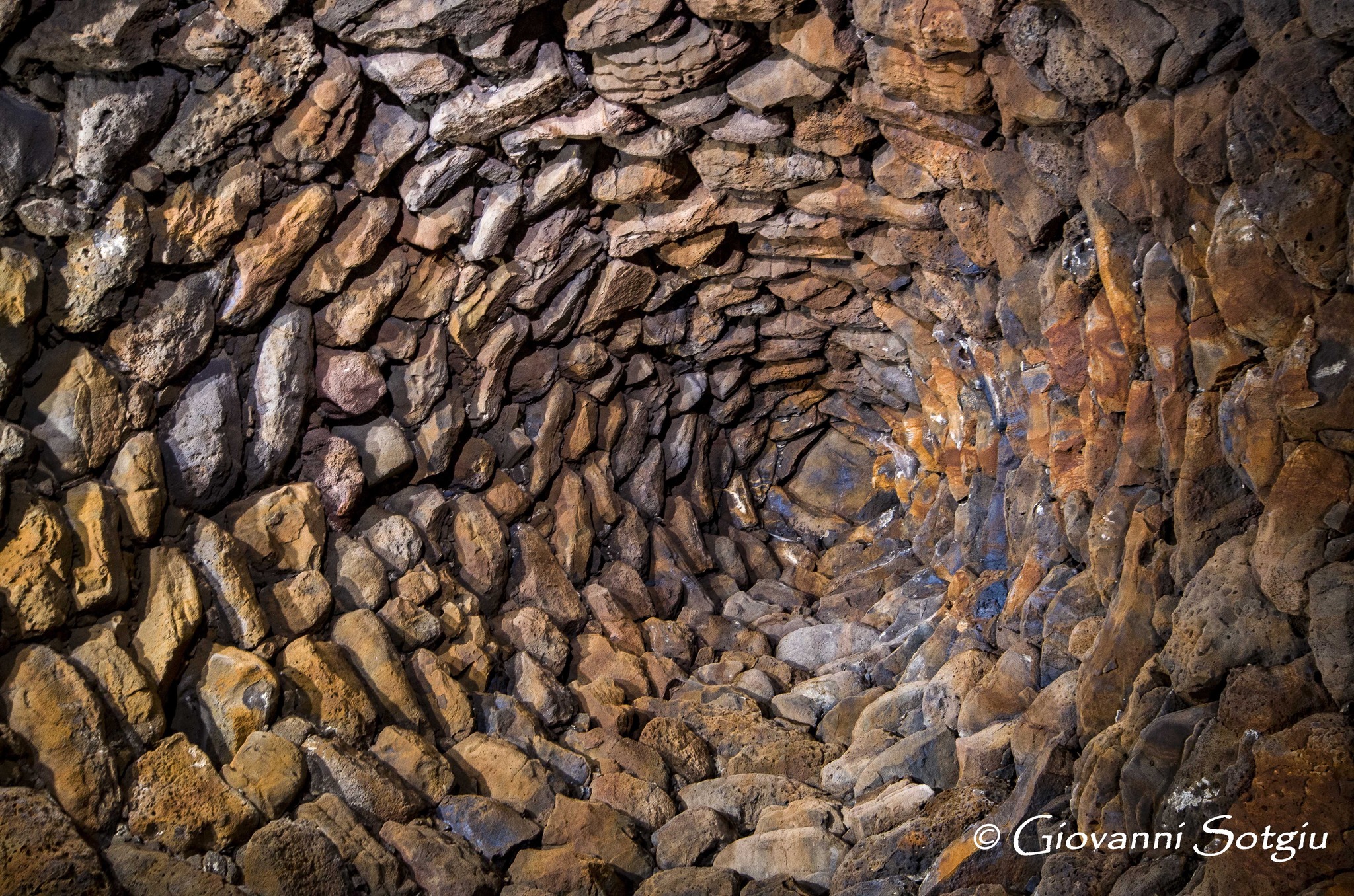The “Ferralzos,” located in the territory of Suni, is not among the most well-known nuraghi, but it still possesses a particular charm, well highlighted in the description and photos by Giovanni Sotgiu:
“I call it great because it has a very high basal chamber, about nine meters, which, if freed from the material covering its base for at least two or three meters, would probably challenge the record among those currently known as the tallest.
You access the monument through a small opening created by a collapse of the staircase on the upper part of the nuraghe, which is reached after struggling through the dense vegetation present.
Once inside, everything becomes grand; the monumental staircase leads us to a niche that takes us into the great tholos.
Leaning out from the aforementioned niche, to the left, one notices the original entrance, now almost completely buried, from which a bit of light filters in from outside below the architrave. In front, a beautiful perfectly round niche; to the right of it, aligned with the entrance, a deep niche that is very buried, at the bottom of which surprisingly springs forth fresh water. Water also emerges below what seems to be another architrave located between the round niche and the one containing the fresh water.
It is not easy to photograph in an environment that, although very spacious, feels highly claustrophobic; however, using the little light I have and taking a few shots, I manage to do it.
Time flies very quickly when one indulges in their passions and marvels at so much beauty.
It is now time to leave.
As I ascend the stairs to exit, I notice to the left of the light filtering from the outside; curious, I observe that a small opening, which opens at half height of the tower, just above the original entrance oriented to the southeast, crosses the masonry and continues perfectly aligned even beyond the staircase, ending inside the tholos.
I then decide to insert a flashlight into the segment of the opening that reaches up to the tholos and descend again inside to observe where a beam of light from the outside would project. It is clearly oriented above the niche where the fresh water emerges.
It is now late to set up all the equipment again, and I decide to take handheld shots with the little light I have to document this detail as well.
As one leaves, they are always filled with bitterness at seeing so much neglect; one wonders if we will ever be able to see and appreciate these monuments in their splendor.
Personally, I always think that when and if this ever happens, we will not be there.
A special thanks to my friend Salvatore Ruggiu, now a companion of many adventures, not only archaeological, for accompanying me and for the patient wait of someone like me who never stops taking pictures.
The nuraghe Ferralzos truly reveals itself, to quote an article that appeared some time ago in the magazine Sardegna Antica, ‘A nuraghe of record’.”
